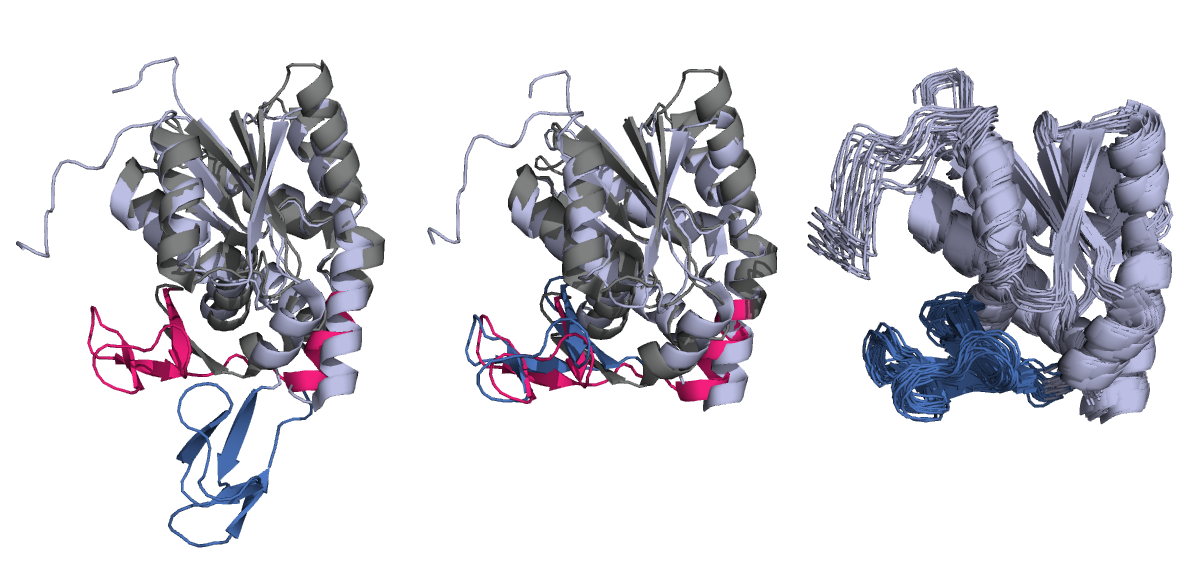Research
Graduate
My dissertation projects were focused on improving statistical modeling of protein structure evolution and alignment. In one project I have investigated how to account for dependence structure in structure evolution - most existing methods assume independence for simplicity (computational and otherwise), but this assumption is certainly violated in reality. How do dependent models perform differently from independent models? What can be gained from incorporating dependence? Our work demonstrated that ignoring dependence in structural evolution can bias evolutionary inference and affect phylogenetic inference. This work was presented at the International Conference for Research in Computational Biology in April 2018. The abstract can be viewed here.
In a second project my advisor and I have developed a model extension that allows evolutionary modeling of flexible proteins. This manuscript is in preparation. In the graphic below, the figure at left shows a pair of conformations of a protein with a flexible “lid” region that opens or closes based on ligand binding. Structural models that can’t accommodate flexibility can only align these structures as well as the left-most figure: the pink and blue “lid” region is poorly aligned. In the middle figure, our flexible structural model identifies the correct positions of the lid’s flexion points and is able to align all positions well. The right-most figure is a way of visualizing the Bayesian posterior distribution of the parameters used to transform (rotate, translate, etc.) the proteins’ coordinates close to each other: in this case, twenty samples of the rotated protein shows that our model’s registration parameters have high posterior precision.

For computer code, see https://github.com/garylarson/SEMAP or contact me via email if I still haven’t made that repo public.
Undergraduate
At University of Richmond I worked with Ted Bunn on a project related to the cosmic microwave background (CMB) radiation using data from the WMAP satellite. In our research we tried to reliably improve low-level galactic dust identification/removal techniques by working with wavelet or radon transformations of the CMB data. In a broad sense, we were investigating a potential counterexample of an implication made by the prevailing cosmological model of the universe.